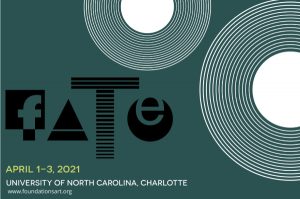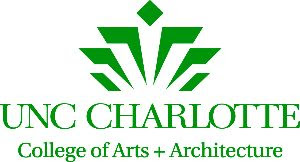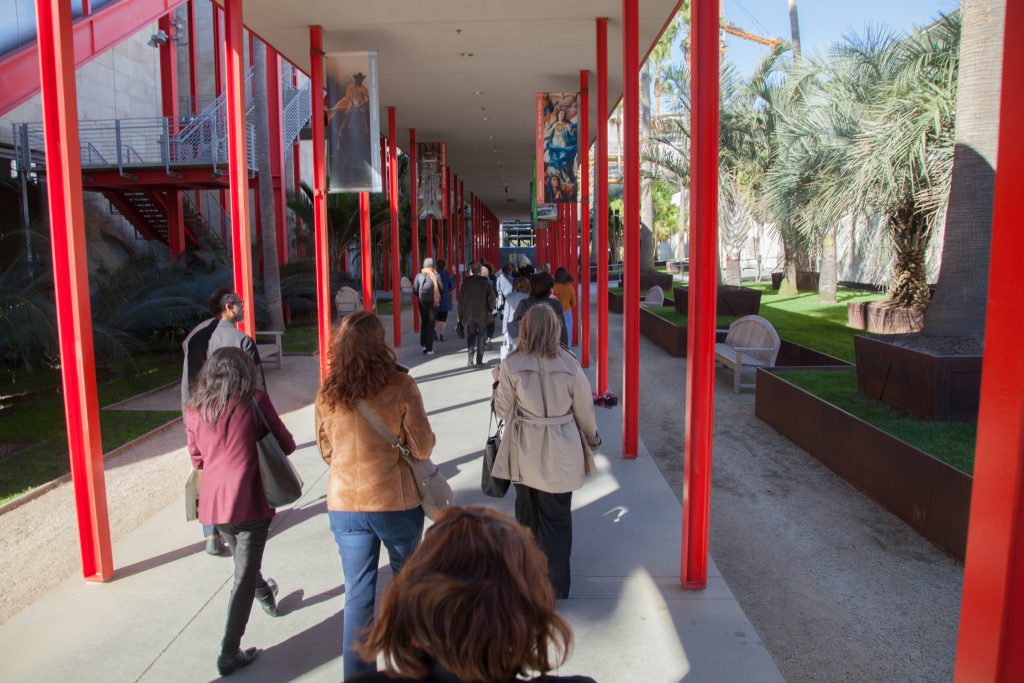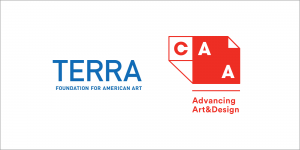CAA News Today
Meet the 2020 Travel Grant Recipients
posted by CAA — Jan 29, 2020
CAA offers Annual Conference Travel Grants to graduate students in art history and studio art and to international artists and scholars. Meet this year’s recipients below.
CAA GRADUATE STUDENT CONFERENCE TRAVEL GRANTS
CAA awards Graduate Student Conference Travel Grants to advanced PhD and MFA graduate students as partial reimbursement of travel expenses to the Annual Conference.
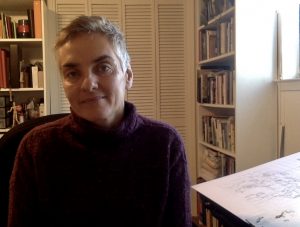
Maureen Burdock, University of California, Davis
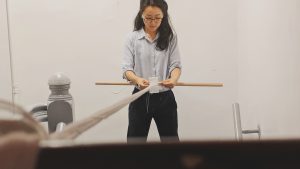
Josephine Lee, Parsons School of Design
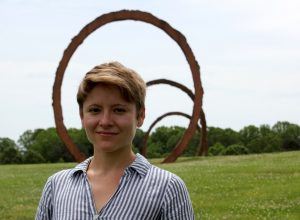
Brantly Hancock Moore, University of North Carolina at Chapel Hill
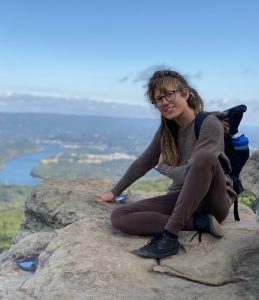
Nicole Winning, University of Massachusetts at Dartmouth
CAA INTERNATIONAL MEMBER CONFERENCE TRAVEL GRANTS
CAA awards the International Member Conference Travel Grant to artists and scholars from outside the United States as partial reimbursement of travel expenses to the Annual Conference.
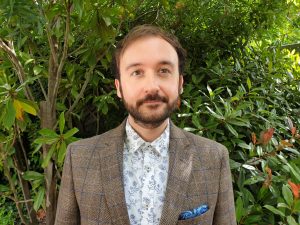
Alex Burchmore, Australian National University
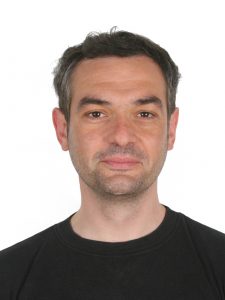
Panos Kompatsiaris, National Research University Higher School of Economics,Moscow
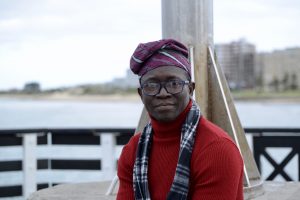
Stephen Adéyemí Folárànmí, Rhodes University, South Africa
CAA TRAVEL GRANT IN MEMORY OF ARCHIBALD CASON EDWARDS, SENIOR, AND SARAH STANLEY GORDON EDWARDS
Established by Mary D. Edwards with the help of others, the CAA Travel Grant in Memory of Archibald Cason Edwards, Senior, and Sarah Stanley Gordon Edwards supports women who are emerging scholars at either an advanced stage of pursuing a doctoral degree or who have received their PhD within the two years prior to the submission of the application.
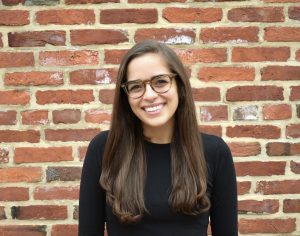
Kristen Nassif, University of Delaware
Paper: Seeing Through Blindness: Disability, Tactile Relief Maps, and Geography
Session: Disability in the Arts: The Active Participation of People with Disabilities in the Arts
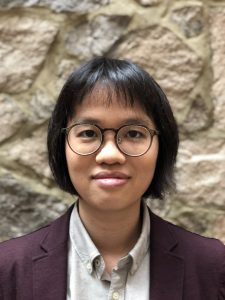
Shirlynn Sham, Yale University
Paper: The Eighth Wonder of the World: Design and Danger in Marc and Isambard Brunel’s Thames Tunnel Project
Session: Topographical Drawing
SAMUEL H. KRESS FOUNDATION CAA CONFERENCE TRAVEL FELLOWSHIP FOR INTERNATIONAL SCHOLARS
Recognizing the value of first-hand exchanges of ideas and experience among art historians, the Kress Foundation is offering support for international scholars participating as speakers at the 2020 CAA Annual Conference. The scholarly focus of the papers must be European art before 1830.
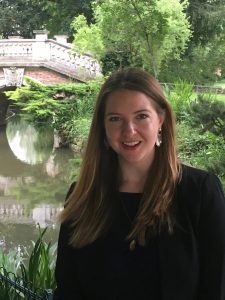
Sophie Ong, Rutgers University
Paper: ‘I pray…that I may have sommethyng for my nekke’: Understanding Jewelry and Its Popularity in the Late Middle Ages and Today
Session: Kitsch and Craft in the Middle Ages: Making Medieval Art Popular
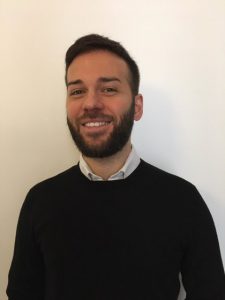
Bruno Ligore, Nice University, France
Paper: Embodying the Antique in the Early 19th Century: Ballet Masters’ Drawing Practices
Session: Dancing in the archives: choreographers’ drawings as resources for art historians (19th-20th centuries)
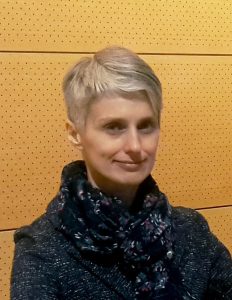
Halyna Kohut, Ivan Franko National University of Liviv, Ukraine
Paper: Is it the Rug or the ‘Other’?
Session: Different Shades of Othering: Orientalism/Occidentalism in the World of Art
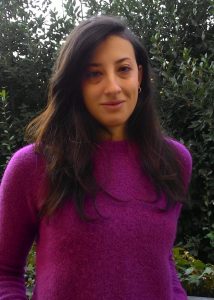
Elisa Antonietta Daniele, University of Verona, Italy
Paper: Performing Bodies, Dancing Trifles: Drawing New Worlds in Il Tabacco, Commemorative Album for the Courtly Ballet Staged in Turin (1650)
Session: Early Modern Animation: Mascarades, Ballet, Automata
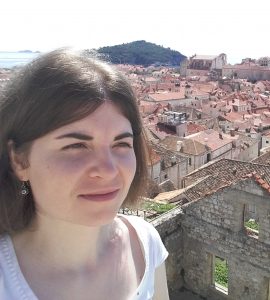
Estefanía López-Salas, Universidade da Coruña, Spain
Paper: Towards a Web-Based Representation of Spatial Change Over Time at San Julián de Samos
Session: Advanced Topics in Digital Art History: 3D (Geo)Spatial Networks
Elena Granuzzo, Independent Scholar, Italy
Paper: The Cicognara Library and Michelangelo Buonarroti: A Historiographical Reading through the Sources
Session: Historic Libraries and the Historiography of Art (II)
CAA-GETTY INTERNATIONAL PROGRAM
Every year since 2012, the CAA-Getty International Program has brought between fifteen and twenty art historians, museum curators, and artists who teach art history to attend CAA’s Annual Conference. This program is funded on an annual basis by the Getty Foundation. Click here to meet the CAA-Getty International Program participants.
Affiliated Society News for January 2020
posted by CAA — Jan 07, 2020
Happy New Year! Affiliated Society News shares the new and exciting things CAA’s affiliated organizations are working on including activities, awards, publications, conferences, and exhibitions. See January’s news below.
Interested in becoming an Affiliated Society? Learn more here.
Community College Professors of Art and Art History
Please join the Community College Professors of Art and Art History at this year’s CAA Conference in Chicago for two events on Wednesday, February 12, 2020.
From 12:30 PM – 1:30 PM in the Lobby Level Continental B room, join us for our annual Business meeting and project share. Bring an idea or project to share with your community college colleagues. Following our business meeting (in the same room) is our session, Taking a New Look: Creating Change in the Studio and Art History Classrooms. Co-Chaired by Susan Altman and Monica Anke Hahn, hear Richard J. Moninski, Tyrus R. Clutter, Rachael Bower and Ross McClain talk about creating meaningful change in their studio and art history programs.
Women’s Caucus for Art
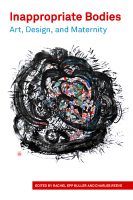
Thursday, February 13, 12:30pm: book presentation and discussion of Inappropriate Bodies: Art, Design, and Maternity, with editors Rachel Epp Buller and Charles Reeve and contributor Niku Kashef
Thursday, February 13, 6:00pm: WCA/CAA panel on Amplifying Inclusion: Intersectional Feminism in Contemporary Curatorial Practice, with presenters Tanya Augsburg, Priscilla Otani, Karen Gutfreund, and Rosemary Meza-DesPlas, with discussant Maria Buszek.
CAA members are also invited to attend WCA exhibitions in Chicago. The Young Women’s Caucus organized Intersectional History at WomanMade Gallery and the National WCA exhibition, Collectively Shifting, is hosted by The Bridgeport Art Center.
New Media Caucus
The New Media Caucus is happy to welcome the following continuing and new board members following a successful 2019-2020 Election Cycle.
Chair of Communication Committee
KT Duffy
Assistant Professor of Art, Northeastern Illinois University
Board Members
Farhad Bayram
Assistant Professor, Indiana State University
Victoria Bradbury
Assistant Professor, The University of North Carolina – Asheville
Meredith Drum
Assistant Professor, School of Visual Arts, Virginia Tech
Zach Duer
Assistant Professor, School of Visual Arts, Virginia Tech
Sue Huang
Assistant Professor, University of Connecticut
Chelsea Thompo
Visiting Professor, Grand Valley State University
The New Media Caucus (NMC) is a 501c3 dedicated to supporting artists and scholars engaged in new media art. More information about the NMC and our mission can be found at newmediacaucus.org.
Society for the History of Collecting
We are looking forward to our debut sessions at CAA in February and will be using our inaugural business meeting to host a conversation about opportunities for research and funding in the field (the Friday lunchtime slot).
We are also excited to announce that the Americas chapter is expanding with Sophia McCabe spearheading a West Coast initiative.
In NY our upcoming events include a curatorial walk-through with Inés Katzenstein of Sur moderno at MoMA (January 8) and a collaboration with Master Drawings New York on Saturday, January 25. Talking Drawings—a conversation amongst four women collectors of works on paper will be moderated by Dr Jennifer Tonkovich of The Morgan Library & Museum. More information can be found here.
Society of Architectural Historians
Are you planning to attend the College Art Association Annual Conference in Chicago? If so, please join SAH’s conversation about two of our most exciting current initiatives, SAH Archipedia and the SAH Data Project, at the SAH Business Meeting on Wednesday, February 12, 12:30–1:30 pm. Pauline Saliga, SAH Executive Director, will discuss the recent launch of SAH Archipedia. This growing, open-access, mobile-friendly online resource will soon provide new opportunities to publish interpretive research about the history of the built environment. Sarah M. Dreller, SAH Postdoctoral Researcher in the Humanities, will answer questions about the purpose, scope, and timeline of the SAH Data Project, a Mellon-funded study that is assessing the status of the field of architectural history in higher education. The project will launch a key component of the data-gathering effort, online surveys for students, faculty, and program chairs/administrators, right before the CAA Annual Conference.
Early Registration is open for the SAH 2020 Annual International Conference in Seattle, Washington, April 29–May 3. Nearly 700 SAH members from around the world are expected to convene at the Renaissance Seattle Hotel to present new research on the history of the built environment, network, and participate in roundtables, seminars, workshops, tours and more. Early registration closes March 3, 2020.
SAH will offer a total of 36 paper sessions at its 2021 Annual International Conference in Montréal, Québec, Canada. The Society invites individuals and those representing SAH chapters and partner organizations to submit a session proposal for the Montréal conference. Since the principal purpose of the SAH annual conference is to inform attendees of the general state of research in architectural history and related disciplines, session proposals covering every time period and all aspects of the built environment, including landscape and urban history, are encouraged. The submission deadline is January 14, 2020.
Visual Resources Association
The Visual Resources Association (VRA) has planned two events for the 2020 Chicago conference and we welcome CAA conference attendees to join us for a full session and open business meeting turned interactive forum.
Both events take place on Wednesday, February 12th, starting with a VRA Business Meeting scheduled midday (free and open to the public), which we have turned into a discussion forum opening with a presentation entitled “From Archive to Classroom: The Use of Omeka and Companion Tools in the Curation of Digital Stories and Exhibits” involving Matt Taylor, Director of the Media and Design Studio, and Rebecca Zorach, Mary Jane Crowe Professor of Art and Art History, as well as their students from Northwestern University. It will be followed by what will surely be an engaging discussion about online exhibitions and other current trends in the field of visual resources.
In the afternoon, a formal session has been organized entitled, “Hands-On to Eyes-On: From Material Collections to Digital Exhibitions“ chaired by Bridget Madden, Associate Director of the Visual Resources Center, in the Department of Art History at the University of Chicago. A distinguished panel of artists, art historians, librarians, museum and information professionals will discuss the hands-on use of materials and museum collections to allow students to apply their knowledge in real-life contexts (full slate below). The presenters will discuss: the use of a materials collection in teaching art history survey courses to studio art and design students; fashion and textile resources transitioning from physical to digital collections for enhanced access; and a two-term curatorial practice course sequenced to design and install a museum exhibition. In all cases, the collections used in teaching are prioritized and sustained, not treated as occasional visits or demonstrations. The role of professional staff supporting these collections and facilitating their use by faculty and students is integral. It will be shown how effective these collaborations can be, including how they can lead to more engaging, active learning experiences in the classroom. The session will take place at 4pm at the Hilton Chicago in the Wilford C room as follows:
1) “Materials in Context: Experiential Learning in Art History” at the Minneapolis College of Art and Design with Allan T. Kohl, Librarian in charge of Visual Resources and Library Instruction, presenting a collection curator’s perspective, partnered with Jessica M. Dandona, Associate Professor of Art History, providing a faculty perspective.
2) “Materiality Made Visible” will be presented by Melanie E. Emerson, Dean of the Library + Special Collections, from the School of the Art Institute of Chicago.
3) “Exhibition in Practice” at the Smart Museum of Art, University of Chicago, will be presented with Leslie Wilson, Curatorial Fellow for Diversity in the Arts, providing “A Perspective from the Classroom” and Berit Ness, Assistant Curator of Academic Initiatives, talking about “Execution in the Museum.”
The Visual Resources Association is a multidisciplinary organization dedicated to furthering research and education in the field of image management within the educational, cultural heritage, and commercial environments (http://vraweb.org/).
For additional information, please contact Maureen Burns, VRA CAA Affiliate Society Representative at moaburns@gmail.com.
Foundations in Art: Theory and Education (FATE)
There is a date change to the original announcement of the FATE Biennial Conference.
18th Biennial Foundations in Art: Theory and Education Conference will be hosted by University of North Carolina Charlotte. Mark your calendars for April 15-17, 2021 and make plans to be there!
Mid-America College Art Association
Invite for new prospective board members:
The Mid-America College Art Association is seeking motivated artists, and art faculty, to become members of an energetic team who provide avenues for fellowship in the arts on the collegiate level. All media are welcome, we give preference to artists that have expertise in Art Finance, Art Non-Profits, Graphic Design, Digital Arts, Art History, Art Administration and Art Therapy, Art Education, Art Interdisciplinary, Art Performance. Please send inquiry and letter of interest and CV to Heather Hertel, MACAA President: heather.hertel@sru.edu.
view our website: www.macaart.org Instagram: midamericacollegeartassoc
SECAC
SECAC 2019: 75th ANNUAL CONFERENCE
In October, SECAC met for the 75th time in Chattanooga, hosted by The University of Tennessee at Chattanooga. 672 members representing 330 institutions participated in 140 sessions. Highlights of the conference included a keynote address by Sharon Louden at the Hunter Museum of American Art, the 2018 SECAC Artist’s Fellowship Exhibition at the ConTemporary Cress Gallery,the SECAC Juried Exhibition, at Stove Works satellite gallery, and the SECAC Mentoring Program.
At the annual business meeting, SECAC President Sandra Reed of Marshall University introduced new members of the Board of Directors: Arkansas, Kevin Cates, University of Arkansas at Little Rock; Florida, Jeff Schwartz, Ringling College of Art and Design; Louisiana, Rachel Stephens, The University of Alabama; Mississippi, Elise Smith, Millsaps College; Tennessee, Christina Vogel, The University of Tennessee at Chattanooga; and At-Large Seat #1, Dennis Ichiyama. Also new to the board are Michael Borowski, Virginia Tech, representing Virginia, and Sunny Spillane, University of North Carolina at Greensboro, serving as an officer in the new role of Secretary.
SECAC 2020 will be hosted by Virginia Commonwealth University in Richmond, October 21–34. Regularly-updated information, and links to calls are published here. The SECAC submissions site is here.
AWARDS PRESENTED AT SECAC 2019
- The SECAC Artist’s Fellowship was awarded to Adrian Rhodes, University of South Carolina, for Blood and Honey.
- Yumi Park-Huntington, Framingham State University in Massachusetts, received the William R. Levin Award for Research in Art History Before 1750 for Monumental Structure, Sacred Landscape, and Cosmology at the Late Formative Period Peruvian Site of Jequetepeque-Jatanca.
- Stephen Mandravelis, The University of Tennessee at Chattanooga, received the William R. Levin Award for Research in Art History Since 1750 for Access to Avenues of Art: Mapping the Cultivation of Rural Art Markets through the American Agriculturalist, 1850-1880.
- The SECAC Award for Excellence in Teaching was presented to Jenny Hager, University of North Florida.
- The SECAC Award for Outstanding Exhibition and Catalog of Contemporary Materials was given to William U. Eiland for Clinton Hill, Georgia Museum of Art, 2018.
- The Georgia Museum of Art received the SECAC Award for Outstanding Exhibition and Catalog of Historical Materials for Crafting History: Textiles, Metals, and Ceramics at the University of Georgia.
- The 2019 SECAC Award for Outstanding Professional Achievement in Graphic Design was presented to Meena Khalili, University of Louisville.
- The 2019 SECAC Award for Excellence in Scholarly Research and Publication was awarded to Peter Scott Brown, University of North Florida, for The Riddle of Jael: The History of a Poxied Heroine in Medieval and Renaissance Art and Culture.
Visit SECAC Awards for details.
Twenty-two graduate students received Gulnar Bosch Travel Awards: Melissa Airy, University of Iowa; Olivia Armandroff, University of Delaware; Alyssa Bralower, University of Illinois at Urbana-Champaign; Lauren Cesiro, Binghamton University; Dominik Eckel, DFK Paris / University of Cologne; Isabel Fontbona Mola, University of Girona, Spain; Dilmar Mauricio Gamero Santos, Temple University; Naghmeh Hachempour, Georgia Southern University; Dana Hogan, Duke University; Julia Katz, Rutgers University-New Brunswick; Ximena Kilroe, CUNY; Julia Kirshaw, Florida State University; Tess McCoy, University of New Mexico; Melissa Miller, University of Arkansas at Little Rock; Jonathan Morgan, Institute for Doctoral Studies in the Visual Arts; Danielle Powell, University of Central Florida; Chris Slaby, College of William & Mary; Sara Anne Stepp, Univeristy of Kansas; Barbara Tyner, Centro de Cultura Casa Lamm, Mexico City; Marina Tyquiengco, University of Pittsburgh; Or Vallah, University of Washington; and Jennifer Vess, University of Iowa.
At the SECAC 2019 Annual Juried Exhibition, Juror Amelia Briggs, Director of David Lusk Gallery, awarded First Place to Anne Herbert, Alabama School of Fine Arts, for Event Horizon; Second Place: to Chung-Fan Chang, Stockton University, for Guangwu’s Land; Third Place to Natalie Harrison, Samford University, for Pastel Tapestry 1; and Honorable Mention to Mary Laube, The University of Tennessee, for Queen Min’s Hair. The Co-Directors’ Award was presented to Ann Moody, University at Buffalo, for Lickety-Split.
American Society of Appraisers
Upcoming educational offerings:
· February 3, 2020 | Fundamentals of Jewelry Appraisal | Tucson, AZ
· February 5, 2020 | Introduction to the Chinese Art Market, Challenges and Opportunities | Webinar
· March 2, 2020 | Fundamentals of Jewelry Appraisal | Carlsbad, CA
· March 16-17, 2020 | Appraising Fine Arts Overview | Chicago, IL
· March 20, 2020 | Personal Property Appraisal Report Writing Update | Reston, VA
· May 30-June 14, 2020 | 9th Annual Summer Appraisal Camp | Purchase, NY
· October 29, 2020 | The Decorative Art and Mechanics of Antique Clocks | Webinar
Historians of Netherlandish Art
CAA CONFERENCE CHICAGO, February 12-15th, 2020:
HNA RECEPTION: Friday, February 14th, between 5:30 and 7 pm. Private Dining Room 4, located on the third floor of the Hilton
HNA SESSION:
Thursday February 13th, 10:30-12:00 pm
Hilton Chicago – Lower Level – Salon C-5: 10
Historians of Netherlandish Art
Joanna Sheers Seidenstein, Harvard Art Museums and Sarah Walsh Mallory, Harvard University
SESSION run by HNA members:
Thursday, February 13th, 6:00-7;30 PM
Hilton Chicago – 3rd Floor – Wilford C
Re-Assessing the Northern European Male Nude
Martha Hollander, Hofstra University and Lisa Rosenthal, University Of Illinois at Urbana-Champaign
JOURNAL OF THE HISTORIANS OF NETHERLANDISH ART:
JHNA has just published a special guest-edited issue on the art of Gerard de Lairesse (Winter 2020, vol. 12:1). The editors include Eric Jan Sluijter (University of Amsterdam Emeritus); Elmer Kolfin (University of Amsterdam); Jasper Hillegers (Salomon Lilian Gallery, Amsterdam); and Marrigje Rikken (Frans Hals Museum, Haarlem).
JHNA has received a grant from the Association of Research Institutes in Art History (ARIAH) to support the development of a hot spot feature for images in the article by Melanie Gifford on Rubens’s Fall of Phaeton, National Gallery of Art, Washington, which appeared in the Summer 2019 issue (vol. 11:2). Watch for this digital feature in Gifford’s essay in 2020 as well as in other essays to come.
Apply to Join the CAA Council of Readers
posted by CAA — Nov 26, 2019
In preparation for the spring submission cycle for the 2021 Annual Conference in New York, the Annual Conference Committee will appoint up to 22 new members to the Council of Readers. Council members read and rate session and presentation proposals and serve a crucial role in the review process for the Annual Conference.
Over 950 proposals are submitted for review each year for selection to the conference program. Each proposal is read by three Council members. By providing their time, knowledge, and expertise of their fields, the council helps to shape the conference program. Each member of the Council reviews up to 60 proposals per year from across CAA’s fields of study and as much as possible from within their self-identified scholarly focus and knowledge. Most proposals include one 250-word abstract, while complete session submissions can include 4-5 abstracts (1250 words). Each reader receives a similar amount of content.
Requirements for Readers
- Current CAA membership
- Time commitment to read and review no more than 60 proposals online in May 2020
- Ability to participate as a Council of Readers member for up to three years
- Readers are required to read and abide by CAA’s Statement on Conflict of Interest and Confidentiality
- Abbreviated CV uploaded to online form
- Completed online form
Application deadline: January 14, 2020
More details:
- The Council of Readers is a group of 50 to 75 CAA members from Professional Committees, Affiliated Societies, and general membership overseen by the Annual Conference chair.
- Readers will be asked to review proposals from across CAA’s fields of study, and as much as possible from within their self-identified scholarly focus. Readers with broad areas of interest are encouraged to participate.
- The proposals will be distributed by May 11 and must be completed by June 8, 2020.
- Readers will access abstracts and complete their reviews in our online system, with orientation and support from the Annual Conference Committee and CAA staff members.
- Each proposal is read and reviewed in the online portal by three different Council members.
- The majority of proposals include a single 250-word abstract, while complete session submissions can include 4-5 abstracts (1250 words).
- Readers will review no more than 60 proposals each, with proportional share of abstracts.
- For each proposal, Readers will use a scale of 1-5 to answer five questions and also enter a short comment for the Annual Conference Committee’s review.
- Members of the Council of Readers serve a three-year term on a rotation so that each year, one third of the council is new.
- The Council of Readers does not meet together in person or electronically.
- After proposals are read and reviewed by the Council, the chair reports to the Annual Conference Committee on session topics, including identifying possible areas of content that are missing from the submissions received.
- The chair finalizes the conference content based on the reviewed submissions.
Pleas email Mira Friedlaender, Manager of Annual Conference, mfriedlaender@collegeart.org, or Tiffany Dugan, Director of Programs and Publications, tdugan@collegeart.org, with any questions.
Meet the Meiss Fund Recipients for Fall 2019
posted by CAA — Nov 21, 2019
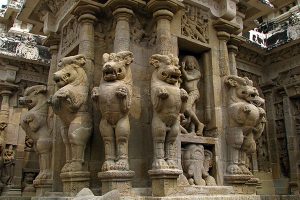
Carvings at the Kailāsanātha Temple in Kāñcīpuram. Photo by mckaysavage, CC BY 2.0
MEET THE GRANTEES
Twice a year, CAA awards grants through the Millard Meiss Publication Fund to support book-length scholarly manuscripts in the history of art, visual studies, and related subjects that have been accepted by a publisher on their merits, but cannot be published in the most desirable form without a subsidy.
Thanks to the generous bequest of the late Prof. Millard Meiss, CAA began awarding these publishing grants in 1975.
The Millard Meiss Publication Fund grantees for Fall 2019 are:
- Anneka Lenssen, Beautiful Agitation: Modern Painting in Syria and the Arab East, University of California Press
- Padma Kaimal, A Balance of Opposites: Reading Material Form at the Kailāsanātha Temple in Kāñcīpuram, University of Washington Press
- Babette Bohn, Women Artists, Their Patrons, and Their Publics in Early Modern Bologna, Penn State University Press
- Elina Gertsman, Nothing is the Matter: Spaces of Absence in Late Medieval Art, Penn State University Press
- Lucy Donkin, Standing on Holy Ground in the Middle Ages, Cornell University Press
- Adrian Anagnost, Spatial Orders, Social Forms: Art and City Space in Modern Brazil, 1928-69, Yale University Press
Read a list of all recipients of the Millard Meiss Publication Fund from 1975 to the present. The list is alphabetized by author’s last name and includes book titles and publishers.
BACKGROUND
Books eligible for a Meiss grant must currently be under contract with a publisher and be on a subject in the arts or art history. The deadlines for the receipt of applications are March 15 and September 15 of each year. Please review the Application Guidelines and the Application Process, Schedule, and Checklist for complete instructions.
CONTACT
Questions? Please contact Cali Buckley, Grants and Special Programs Manager, at cbuckley@collegeart.org.
Meet the 2019 Wyeth Award Winners
posted by CAA — Nov 19, 2019
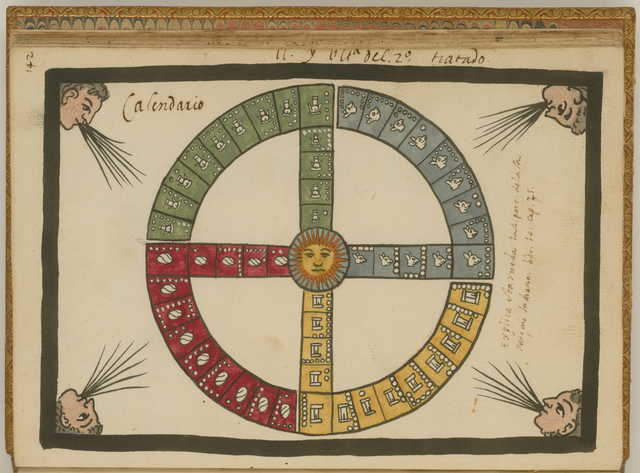
The Aztec Tonalpohualli Calendar, 1585, attributed to the 16th-century Mexican Jesuit Juan de Tovar. Image: Wikimedia Commons
Meet the Grantees
Since 2005, the Wyeth Foundation for American Art has supported the publication of books on American art through the Wyeth Foundation for American Art Publication Grant, administered by CAA. The 2019 grantees are:
- Lucy Bradnock, No More Masterpieces: Modern Art After Artaud, Yale University Press
- Elizabeth Ferrer, Critical Lens: A History of Latinx Photography, University of Washington Press
- Kimberly Beil, Good Pictures: A History of Popular Photography, Stanford University Press
- Elizabeth Boone, Descendants of Aztec Pictography: The Cultural Encyclopedias of Sixteenth Century Mexico, The University of Texas Press
Read a list of all recipients of the Wyeth Foundation for American Art Publication Grant from 2005 to the present.
BACKGROUND
For the Wyeth Foundation for American Art Publication Grant, “American art” is defined as art created in the United States, Canada, and Mexico. Eligible for the grant are book-length scholarly manuscripts in the history of American art, visual studies, and related subjects that have been accepted by a publisher on their merits but cannot be published in the most desirable form without a subsidy. The deadline for the receipt of applications is September 15 of each year.
Guidelines
Process, Materials, and Checklist
CONTACT
Questions? Please contact Cali Buckley, Grants and Special Programs Manager, at cbuckley@collegeart.org.
Meet the 2020 CAA-Getty International Program Participants
posted by CAA — Nov 14, 2019
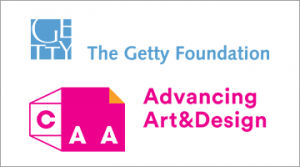
We’re pleased to announce this year’s participants in the CAA-Getty International Program. Now in its ninth year, this international program supported by the Getty Foundation will bring fifteen new participants and five alumni to the 2020 Annual Conference in Chicago, Illinois.
The participants—professors of art history, curators, and artists who teach art history—hail from countries throughout the world, expanding CAA’s growing international membership and contributing to an increasingly diverse community of scholars and ideas. This year we are adding participants from four countries not included previously—Bolivia, Saudi Arabia, Côte d’Ivoire, and Singapore—bringing the total number of countries represented by the program to fifty. Selected by a jury of CAA members from a highly competitive group of applicants, the participants will receive funding for travel expenses, hotel accommodations, conference registration, CAA membership, and per diems for out-of-pocket expenditures.
At a one-day preconference colloquium, to be held this year at the School of the Art Institute of Chicago, the fifteen new participants will discuss key issues in the international study of art history together with five CAA-Getty alumni and several CAA members from the United States, who also will serve as hosts throughout the conference. The preconference program will delve deeper into subjects discussed during last year’s program, including such topics as postcolonial and Eurocentric legacies, interdisciplinary and transnational methodologies, and the intersection of politics and art history.
This is the third year that the program includes five alumni, who provide an intellectual link between previous convenings of the international program and this year’s events. They also serve as liaisons between CAA and the growing community of CAA-Getty alumni. In addition to serving as moderators for the preconference colloquium, the five alumni will present a new Global Conversation during the 2020 conference titled Things Aren’t Always as they Seem: Art History and the Politics of Vision.
The goal of the CAA-Getty International Program is to increase international participation in the organization’s activities, thereby expanding international networks and the exchange of ideas both during and after the conference. CAA currently includes members from sixty countries around the world. We look forward to welcoming the following participants at the next Annual Conference in Chicago.
2020 Participants in the CAA-Getty International Program
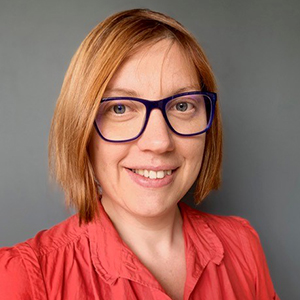
Irene Bronner is a senior lecturer with the South African Research Chair in South African Art History and Visual Culture, Faculty of Art, Design and Architecture, University of Johannesburg, South Africa. Her doctorate (DLitt et Phil), titled “Representations of Domestic Workers in Post-apartheid South African Art Practice,” was conferred by the University of Johannesburg in 2016. She then held a three-year postdoctoral research fellowship with the same institution, during which time she received a Postdoctoral Research Fellows’ Excellence Award. Her research interests center on feminist studies in the visual arts, with a focus on contemporary southern Africa. She works principally with feminist, queer and postcolonial cultural theory as well as issues of memory, affect, gender, and the aftermath of trauma. She has published in local and international journals, recently in Woman’s Art Journal and Textile: Journal of Cloth and Culture.
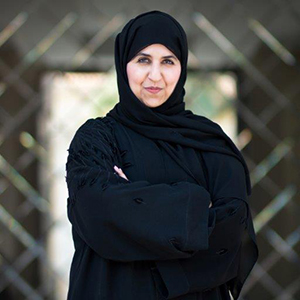
Eiman Elgibreen is an artist and an assistant professor of art history at the Princess Nourah bint Abdulrahman University in Riyadh, Saudi Arabia. She obtained a PhD in art history from the University of Sussex (UK) for her research on “Image Making: Representations of Women in the Art and Career of Safeya Binzagr 1968-2000.” Since 2011 Elgibreen has also been a freelance writer for Al-Riyadh Daily Newspaper and Al-Jazirah Daily Newspaper, and an art consultant for organizations that are concerned with preserving the legacy of Saudi pioneer artists such as Darat Safeya Binzagr (a museum devoted to the artist’s work), and Saudi Arts House (a family foundation devoted to the work of Mohammed Alsaleem). In addition, she has curated a number of art exhibitions, including the Saudi National Pavilion at the 58th Venice Biennale, 2019. Elgibreen is interested in exploring the forgotten and/or misrepresented aspects of Saudi and Arab culture through her research and her art. A goal of her work is to encourage acceptance of cultural differences.
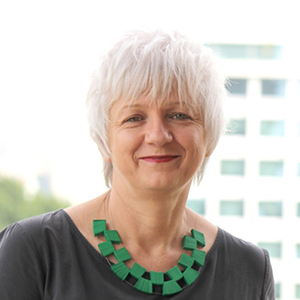
Dária G. Jaremtchuk is an associate professor of art history at the Universidade de São Paulo, Brazil, where she teaches undergraduate and graduate courses on contemporary art. As Fulbright Brazil Distinguished Chair at Emory University in 2019, she taught a course in the art history department about Brazilian contemporary visual arts. In 2018, she was a visiting scholar at Georgetown University and at Brown University in 2011. In 2010, she edited the book Arte e política: situações (Art and politics: situations) (Alameda Editora) and in 2007 she published Anna Bella Geiger: Passagens Conceituais (Anna Bella Geiger: conceptual passages) (C/Arte and Editora da Universidade de São Paulo). She is currently researching the relocation of Brazilian artists during the Brazilian military dictatorship of the 1960s and 70s and the artistic exchange between Brazil and the United States at that time. She has published on this topic in journals, conference proceedings, and book chapters.
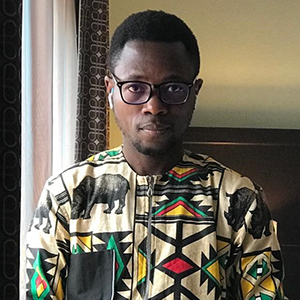
Ganiyu Jimoh received a PhD in art history from the University of Lagos, Nigeria, where he is also a lecturer. He is currently a postdoctoral fellow with the Arts of Africa and Global Souths research program in the Department of Fine Art at Rhodes University in South Africa. His research, which focuses on contemporary art, new media, satire, and cartoons has attracted major awards, including the prestigious University of Lagos Best Researcher Award in Arts and Humanities in 2011. In 2015 he received a grant to conduct research for his PhD dissertation at the African Studies Center at Michigan State University. Jimoh is also a recipient of the 2019 African Studies Association Presidential fellowship. As a scholarly writer who is also a practicing political cartoonist, Jimga (his cartoon signature) has several local and international exhibitions to his credit and currently serves as the secretary of Cartoonists Association of Nigeria (CARTAN).
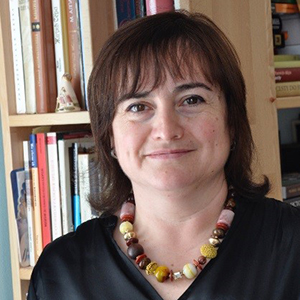
Mariana Levytska is a research associate in the Department of Art Studies of the Ethnology Institute at the National Academy of Sciences of Ukraine in Lviv. She received a PhD in the history of art from the Lviv National Academy of Arts in 2003. Based on her thesis, she published a monograph about Ukrainian portrait painting as an artistic and memorial phenomenon of the long nineteenth century. In addition, she has worked as a senior lecturer from 2005–14 and associate professor in 2015 at the Department of Architectural Environment Design in the Faculty of Architecture of the Lviv National Agricultural University. Levytska’s current area of research is Ukrainian religious art of the eighteenth century (late Baroque-Rococo period), focusing on the concept of cultural transfer according to “peripatetic works of art (such as engravings and albums)” as well as peripatetic artists. She is also interested in issues of Ukrainian historiography of the art of the twentieth century.
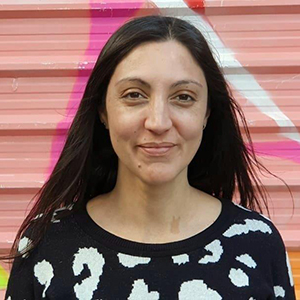
Daniela Lucena holds a PhD in social sciences from the University of Buenos Aires (UBA) and specialize in the sociology of art and culture. A researcher at the National Scientific and Technical Research Council (CONICET) in Buenos Aires, she teaches sociology of art courses at UBA, where she is also head of a research team. Since 2003 she has studied various aesthetical projects where art, culture, and politics are intertwined. Her books include Contaminación artística. Arte concreto, comunismo y peronismo en los años 40 (Artistic contamination: concret avant-garde, communism and Peronism in the 40s) (Biblios, 2015) and Modo mata moda. Arte, cuerpo y (micro)política en los 80 (Form kills fashion: art, body and [micro]politics in the 80s), coauthored with Gisela Laboureau, (EDULP, 2016). In addition to her work as researcher, since 2007 she has collaborated with PH15, a foundation that organizes photography workshops for children of vulnerable populations, assessing programs and community work linked to art.
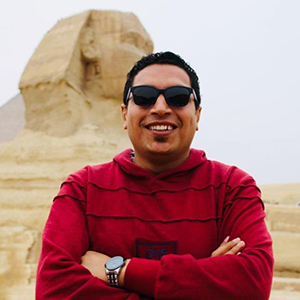
Ali Mahfouz is the director of the Mansoura Storage Museum, part of the Ministry of Egyptian Antiquities. He received a BA in 2010 and an MA in Egyptology in 2017, both from Mansoura University. He is currently working on his PhD. Mahfouz began working as an inspector of antiquities at the Ministry of Antiquities in 2012. In August 2015 he was appointed the supervisor of the Mansoura Storage Museum and in October 2018 he became its director. With colleagues, Mahfouz founded Save Mansoura, a volunteer organization dedicated to raising public awareness about the value of cultural heritage and the restoration of historic sites. He is also the cofounder of the Documentation of Architectural and Urban Heritage of Mansoura City Project, which aims to document, digitize, and archive that city’s cultural history. His greatest concern is the fate of archaeological sites damaged or destroyed because of political conflicts and the need to preserve his country’s cultural heritage in the wake of that destruction.
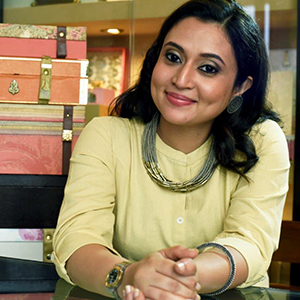
Priya Maholay-Jaradi is the founding convenor of a new art history academic program, a collaboration between the National University of Singapore (NUS) and the National Gallery Singapore. She earned an MA in art history from the School of Oriental and African Studies, London (2001); a PhD from NUS (2012), and a postdoctoral fellowship at the International Institute for Asian Studies, Leiden (2013). A former curator at the Asian Civilizations Museum, Singapore, she has curated Portrait of a Community (National Gallery of Modern Art, Mumbai, 2002), Beauty in Asia (Asian Civilizations Museum, Singapore, 2007) and Tautology of Memory (NUS Museum, Singapore, 2012). Jaradi’s monograph, Fashioning a National Art: Baroda’s Royal Collection and Institutions (1875-1924) (Oxford University Press, 2016), mobilizes provincial archives to reveal links between princely modernities and nationalisms in South Asia. She is the volume editor of Baroda: A Cosmopolitan Provenance in Transition (Marg Foundation, 2015). Her current research examines India-Singapore museological imaginations within the context of cold war diplomacy, the Non-Aligned Movement, and decolonization.
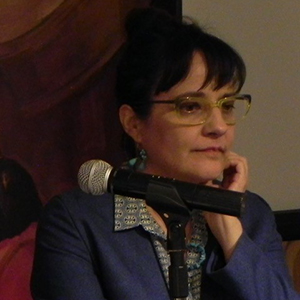
Valeria Paz Moscoso specializes in modern and contemporary Bolivian art history. She is the academic coordinator and advisor in the Department of Culture at the Universidad Católica Boliviana (La Paz), where she is also a temporary lecturer and editor of the journal Ciencia y Cultura (Science and culture). Her PhD dissertation examined the concept of repression and emancipation in the work of Bolivian artist Roberto Valcárcel. Currently, she is researching the disruption of the narrative of Indigenism in contemporary art. Additional research interests include gender, humor, critical theory, postcolonial studies, and arts-based research. She has curated exhibitions in Bolivia and the United Kingdom, and published in journals such as ESCALA Research Papers, Ciencia y Cultura, Bisagra (Hinge), Terremoto (Earthquake), and in the books Corrosión y Anomalía: escenas del arte contemporáneo boliviano (Corrosion and anomaly: scenes from contemporary Bolivian art) (2019) and Bolivia: Los caminos de la escultura (Bolivia: the paths of sculpture) (2009), a publication selected for the Bicentennial Library of Bolivia.
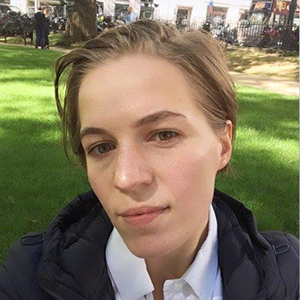
Daria Panaiotti is a photography curator and research associate in the Contemporary Art Department of the State Hermitage Museum, St. Petersburg, Russia. She graduated with honors from the European University in St. Petersburg (EUSPB), where she is currently completing her PhD with a dissertation on the history of Soviet documentary photography in Brezhnev’s era. She is also a member of the program committee of the After Post-Photography international conference, the only annual conference on photographic theory and history in Russia. Previously she was involved in the project In Support of Photography in Russia, funded by the IRIS Foundation, Moscow, where she was a member of the curatorial team that organized exhibitions of Russian photography for FotoFest 2012—an international photography festival held every two years in Houston, Texas—and where she also participated in an international portfolio review for Russian photographers at the Garage Center for Contemporary Culture in Moscow in 2011.
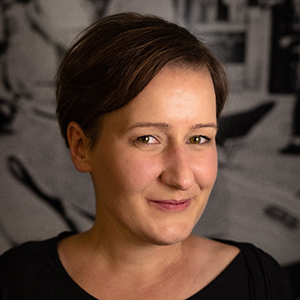
Aleksandra Paradowska is a lecturer and researcher in the Department of Art History and Philosophy, Faculty of Art Education and Curatorial Studies, at the University of Fine Arts in Poznań, Poland. After receiving a PhD from the Adam Mickiewicz University in Poznań in 2013, she was a postdoctoral fellow at the University of Wrocław from 2014–17. Her research focuses on architectural history of the nineteenth and twentieth centuries, especially the relationship between architecture and politics. For the past five years she has studied Nazi architecture in Polish territories during the Second World War in relation to different perspectives of the humanities, that is, interdisciplinary views of postcolonial and heritage studies. Paradowska has published widely on Polish interwar architecture and received several scholarships: from DAAD (Deutscher Akademischer Austauschdienst) in 2010, START by the Foundation for Polish Science in 2014, and a scholarship for leading young researchers in Poland by the Ministry of Science and Higher Education in 2017–19.
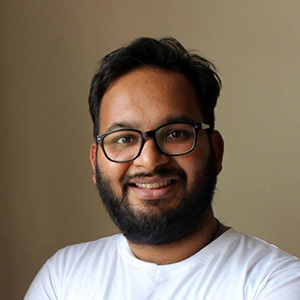
Saurabh Tewari received a BArch in 2008 from the Sushant School of Art and Architecture, Gurgaon/GGSIP University, Delhi (India), and a MDes in 2010 from the Industrial Design Center, Indian Institute of Technology Bombay. As a doctoral candidate in the Design Program at the Indian Institute of Technology Kanpur, he is attempting to map out and understand the shifting role of design in postcolonial India within the broader narrative of national development. Currently an assistant professor of design in the School of Planning and Architecture in Bhopal, Tewari has developed a curriculum that includes design history, design culture, and design studies. Ultimately, his goal is to develop South Asia’s first postgraduate program in design history and studies. He views his role in two ways: as a design historian in South Asia exploring and constructing scholarly approaches to design history, and as a South Asian scholar in the design history community voicing the potential of decolonized approaches to the field.
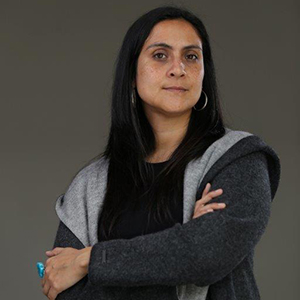
Giuliana Vidarte received a BA in Latin American literature and an MA in art history from the Pontificia Universidad Católica del Perú. In 2013 she was part of a curatorial intensive course in Northern Ireland organized by Independent Curators International (New York). In 2014 she received a travel grant to participate in the annual meeting of the International Committee for Museums and Collections of Modern Art (CIMAM) in Qatar. Between 2015–18, she was the curator of Bufeo: Amazonía+Arte, a project for the research and dissemination of Amazonian art. Vidarte has developed exhibition projects about the relationship between visual arts and literature, the rewriting of history based on the recovery of unofficial discourses, and artistic production in the Peruvian Amazon. Currently, she is chief curator and head of exhibitions at the Museo de Arte Contemporáneo in Lima (MAC Lima) and curatorial assistant for the Peruvian pavilion at the 58th Venice Biennale in 2019.
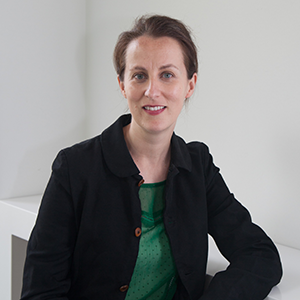
Julia Waite is the curator of New Zealand art at the Auckland Art Gallery Toi o Tāmaki, New Zealand’s largest art museum. She has worked on a number of large-scale exhibitions including the fifth Auckland triennial, If you were to live here . . . (2013) and Space to Dream: Recent Art from South America (2016). Her research interests are focused on the development of modern art in New Zealand and its connections with other peripheral modernisms. In 2015 she curated the exhibition Freedom and Structure: Cubism and New Zealand Art 1930–1960, which toured throughout New Zealand, and published an associated catalogue. She cocurated the major survey of New Zealand’s preeminent abstract painter Gordon Walters: New Vision, which opened at Auckland Art Gallery in 2018. Most recently, Waite has cocurated Louise Henderson: From Life, the first comprehensive retrospective of French-born New Zealand artist Louise Henderson. She has an MA in art history (First Class) and an MA in museum and heritage studies.
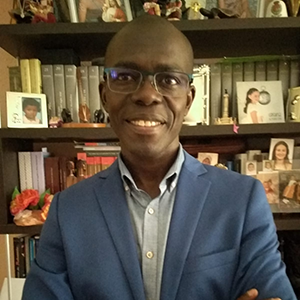
Jean-Arsène Yao received a PhD in Latin American history from the Universidad de Alcalá (Spain) in 2002. His scholarship focuses on teaching Spanish in the African Diaspora, particularly with blacks in Argentina. Currently professor of Latin America and Caribbean studies at the Université Félix Houphouët-Boigny (Côte d’Ivoire) and visiting professor at the Universidad de Alcalá and the Universidad de Granada (Spain), his teaching interests include Hispanic American culture and civilization; race, class, and ethnicity in Latin America; and Afro-Hispanic history. He has a special interest in the visual representation of people of African descent in art history and visual studies. Yao has conducted research in Argentina, Colombia, Cuba, Ecuador, and Uruguay. He has published widely, including five books, several book chapters, and over twenty articles in juried journals of research. Since 2016 he has been the founder-coordinator of the Group of Latin American Studies and Research (https://grelat-ufhb.org/).
Participating Alumni
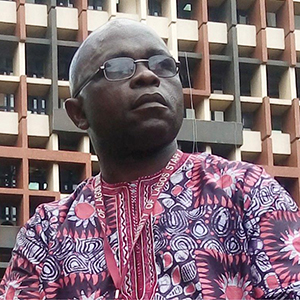
Abiodun Akande is a senior lecturer at the University of Lagos, Nigeria, where he teaches painting, art education, and art history. Akande earned a BA in fine arts from the Obafemi Awolowo University and received an MA and PhD in the visual arts of Africa from the Institute of African Studies, University of Ibadan, Nigeria. In 2013, he participated in the first Basel Summer School in African Studies at the University of Basel in Switzerland; he also attended a graduate symposium hosted by the School of Arts at Peking University in Beijing, China. Akande first participated in the CAA-Getty International Program in 2016 and returned the following year to participate in the 2017 CAA-Getty reunion program. His current research focuses on knowledge systems in the art and cultural practices of indigenous communities in Nigeria. A recent publication, “Ará òrun kìn-ìn kin-in: Òyó-Yòrùbá egúngún Masquerade in Communion and Maintenance of Ontological Balance,” (Genealogy, 3(1), 7, 2019) explores the Yòrùbá belief in life after death, and how the powers and spirits of the deceased are harnessed for the benefit of the living.
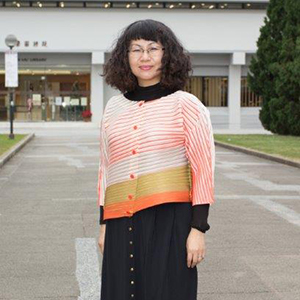
Pedith Chan is an assistant professor of Cultural Management in the Faculty of Arts at the Chinese University of Hong Kong. She received her PhD in Art and Archaeology from SOAS, University of London. Before joining the Chinese University of Hong Kong Chan was an assistant curator at the Hong Kong Museum of Art, and an assistant professor at the City University of Hong Kong. Her research interests focus on the production and consumption of art and cultural heritage in modern and contemporary China. Recent publications include The Making of a Modern Art World: Institutionalization and Legitimization of Guohua in Republican Shanghai (Leiden: Brill, 2017), “Representation of Chinese Civilization: Exhibiting Chinese Art in Republican China,” in The Future of Museum and Gallery Design (London: Routledge, 2018), and “In Search of the Southeast: Tourism, Nationalism, Scenic Landscape in Republican China,” (Twentieth-Century China, 2018). She is currently researching the making of scenic sites in modern China. Chan was a participant in the 2019 CAA-Getty International Program.
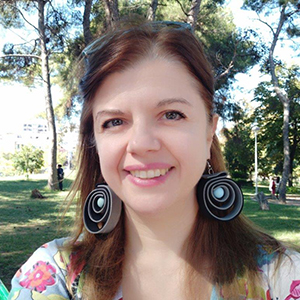
Iro Katsaridou has been the curator of modern and contemporary art at the Museum of Byzantine Culture in Thessaloniki, Greece since 2005. She studied art history at the Aristotle University of Thessaloniki and the Université Paris I-Sorbonne, and also pursued museum studies at the City University of New York. Her doctoral dissertation focused on contemporary Greek photography (Aristotle University, 2010). For the past six years Katsaridou has been researching photography and art in World War I and II, during which time she has curated exhibitions on the subject and edited related catalogues. For the last four years she has been teaching as an adjunct faculty member at several Greek universities. She has co-edited two books about photography during the Nazi Occupation of Greece (1941-1944) and written articles and book chapters on photography, exhibition display policies, as well as the relationship between contemporary Greek art and politics. In 2019, she participated in the CAA-Getty International Program.
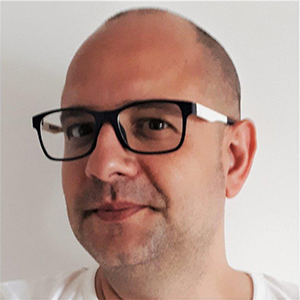
Cristian Nae is an associate professor at the George Enescu National University of Arts in Iași, Romania, where he teaches courses on contemporary art history, critical theory, visual and exhibition studies. He has benefited from scholarships and research grants from the Erste Foundation (Vienna), National Research Council, Romania (CNCS-UEFISCDI) , the CAA-Getty International Program, the Getty Foundation (Los Angeles), and New Europe College (Bucharest). His latest studies have appeared in collective volumes published by Wiley-Blackwell (2019, forthcoming) and Routledge (2018). Nae is the co-editor of Rethinking the Image of the World: Projects and Sketches. Contemporary Romanian Art 2010-2020 (Hatje Cantz, 2019, forthcoming). As a curator, he is the co-organizer of the exhibition Rethinking the Image of the World: Projects and Sketches (Musée Mill, La Louvrière, Belgium, 2019), which was part of the Europalia Arts Festival. Nae also curated Unfinished Conversations on the Weight of Absence, the exhibition marking Romania’s participation in the 58th Venice Biennale (2019). Nae participated in the first year of the CAA-Getty International Program, in 2012.
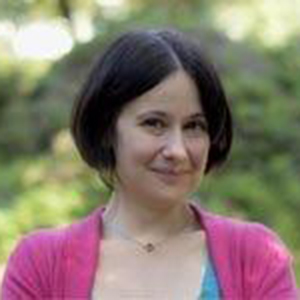
Nóra Veszprémi is a research associate for the European Research Council-funded project Continuity/Rupture: Art and Architecture in Central Europe 1918–1939 (CRAACE) at Masaryk University, Brno (Czech Republic). She is also an honorary research fellow at the University of Birmingham (UK), where she recently completed a project on museums in Austria-Hungary between 1867 and 1918. In 2014–15 she taught at the Institute of Art History at Eötvös Loránd University, Budapest (Hungary), where she also received her PhD in 2013. Veszprémi specializes in nineteenth- and early-twentieth-century Central European art. A former curator at the Hungarian National Gallery, she is the author of a monograph on romanticism and popular taste in mid-nineteenth century Hungary (in Hungarian) and co-author (with Matthew Rampley and Markian Prokopovych) of two forthcoming volumes on museums in Austria-Hungary: An Empire on Display: The Art Galleries and Museums of Austria-Hungary (Penn State University Press, 2020); and Liberalism, Nationalism and Design Reform in the Habsburg Empire: Museums of Design, Industry and the Applied Arts (Routledge, 2020). She is currently working on a monograph about historical memory in Central Europe after the collapse of the Habsburg Empire. Veszprémi was a 2015 participant in the CAA-Getty International Program.
Art Journal / Art Journal Open (AJO) Editorial Board Seeks New Members
posted by CAA — Nov 11, 2019
CAA invites nominations and self-nominations for two individuals to serve on the Art Journal / AJO Editorial Board for a three-and-one-half-year term: January 1, 2020–June 30, 2023 Candidates may be artists, art historians, art critics, art educators, curators, or other art professionals; institutional affiliation is not required. Art Journal, published quarterly by CAA, is devoted to twentieth- and twenty-first-century art and visual culture. AJO is an online forum for the visual arts that presents artists’ projects, conversations and interviews, scholarly essays, and other forms of original content. Committed to fostering new intellectual exchanges in the fields of modern and contemporary art, AJO prioritizes material that makes meaningful use of the web and publishes on a rolling basis.
The editorial board advises the Art Journal and AJO editors-in-chief and assists them in seeking authors, articles, artists’ projects, and other content for the journal; performs peer review and recommends peer reviewers; guides the journals’ editorial programs and may propose new initiatives for them; promotes and advocates for both journals; and may support fundraising efforts on their behalf. Members also assist the editors-in-chief to keep abreast of trends and issues in the field by attending and reporting on sessions at the CAA Annual Conference and other academic conferences, symposia, exhibitions, and events.
The Art Journal / AJO Editorial Board meets three times a year, with meetings in the spring and fall plus one at the CAA Annual Conference in February. The fall and spring meetings are currently held by teleconference. Members are expected to pay travel and lodging expenses to attend the conference in February. Members of all editorial boards volunteer their services to CAA without compensation.
Candidates must be current CAA members in good standing and should not be serving on the editorial board of a competitive journal or on another CAA editorial board or committee. Members may not publish their own work in the journals during the term of service. CAA encourages applications from colleagues who will contribute to the diversity of perspectives on the Art Journal / AJO Editorial Board and who will engage actively with conversations about the discipline’s engagements with differences of culture, religion, nationality, race, gender, sexuality, and access. Nominators should ascertain their nominee’s willingness to serve before submitting a name; self-nominations are also welcome. Please send a letter describing your or your nominee’s interest in and qualifications for appointment, a CV, and your contact information to Joan Strasbaugh, Managing Editor, at JStrasbaugh@collegeart.org or c/o CAA, 50 Broadway, 21st floor, New York, NY 10004.
Deadline: Sunday, December 8, 2019
Now Accepting Applications for the Art History Fund for Travel to Special Exhibitions
posted by CAA — Oct 22, 2019
In August 2018, we announced that CAA had received a major anonymous gift to fund travel for art history faculty and their students to special exhibitions related to their classwork. After a successful inaugural year, we’re pleased to now be accepting applications for the second grant cycle of the Art History Fund for Travel to Special Exhibitions.
The fund is designed to award up to $10,000 to qualifying undergraduate and graduate art history classes to cover students’ and instructors’ costs (travel, accommodations, and admissions fees) associated with attending museum special exhibitions throughout the United States and worldwide. The purpose of the grants is to enhance students’ first-hand knowledge of original works of art.
Applications are due by January 15, 2020.
GUIDELINES
- These awards support student and instructor travel costs incurred while visiting museum special exhibitions in the United States and worldwide.
- Graduate and undergraduate art history classes are eligible to apply for funds to attend temporary museum exhibitions in the United States and other countries. Travel to see permanent collections is not eligible, nor would be performances and related ephemeral events. Exhibitions on any artist, period, or area of art history are eligible for funding.
- Awards are made directly to institutions whose institutional membership in CAA is in good standing.
- Applicant instructors must have individual membership in CAA and be in good standing.
- Funds may only be used to travel to exhibitions that correspond directly to the content of the class.
- The size of the class for which a grant may be awarded shall not be larger than fifteen (15) students.
- Awards may only be used for admission fees, travel and lodging expenses for the instructor and class members. Every attempt to attain group rates must be made.
Completed applications must include the following:
- Instructor’s curriculum vitae
- A course description and syllabus that identifies and explains the exhibition as part of the pedagogical aim of the course – Be sure to detail how the visit is integrated into the course (up to 500 words)
- An explanation of the instructor’s expertise in the subject matter of the exhibition (up to 250 words)
- A tentative itinerary of travel and lodging (up to 250 words)
- A budget detailing transportation and lodging expenses associated with traveling to and from the exhibition and lodging and admission costs, including an explanation of how any travel and accommodation funds in excess of the award will be raised
- A letter of support from the instructor’s department chair or dean
CRITERIA
- How well the exhibition fits within the pedagogical aim of the course.
- The scholarly merit of the exhibition.
- Financial need. Would the class not be able to visit the exhibition, otherwise?
AWARDS
Awards will not exceed $10,000 per class, per exhibition.
All travel must be completed between June 2020 – May 2021.
REPORTING
Awardees must submit a report of up to 1,000 words which explains in detail the benefits received and problems encountered in the course of travel to the exhibition for which support was received.
*Reports must be submitted to CAA no later than two months after the completion of travel.
ANNUAL CONFERENCE
Recipients of the award will be guaranteed a session at the subsequent CAA Annual Conference after their travel has ended. CAA will make the session available, but costs associated with attending the conference, including registration, membership, travel, and accommodation, will be the participants’ responsibility.
TIMELINE
The deadline for application materials is January 15.
Announcing Research Travel Grants Funded by the Terra Foundation for American Art
posted by CAA — Sep 26, 2019
We’re pleased to announce our administration of the Terra Foundation for American Art Research Travel Grants.
Now administered and juried by CAA, the Terra Foundation initiated this grant program in 2003 to fund European candidates. It was expanded to reach candidates worldwide in 2012, and opened to US-based researchers in 2017 to travel abroad, developing American art scholar networks around the world with a total of 173 grantees since its inception.
The Research Travel Grants will be awarded annually, providing support to doctoral, postdoctoral, and senior scholars from both the US and outside the US for research topics dedicated to the art and visual culture of the United States prior to 1980.
“We are excited to expand our partnership with the Terra Foundation to provide continued support for scholars of American art,” said David Raizman, interim executive director of CAA. “Research funding for domestic and international scholars is essential to the vitality of the field, and these generous grants from the Terra Foundation will facilitate the advancement of their work. The inclusion of international scholars for these grants is especially gratifying, as it promotes new perspectives and engages the wider scholarly community.”
The grants foster firsthand engagement with American artworks and art-historical resources; build networks for non-US-based scholars studying American art; and expand access to artworks, scholarly materials, and communities for US-based scholars studying American art in an international context.
Awards of up to $9,000 will be granted on a per project basis by a jury formed by CAA. The first awards will be announced in March of 2020.
CAA’s administration of the Terra Foundation for American Art Research Travel Grants continues a long history at CAA of supporting travel and scholarship for professionals and students in the visual arts and design. Other grants offered by CAA include the Professional Development Fellowships for Graduate Students, the Terra Foundation for American Art International Publication Grant, the Wyeth Foundation for American Art Publication Grant, the Millard Meiss Publication Fund, the CAA Getty International Program, Travel Grants to the CAA Annual Conference, and introduced last year, the Art History Fund for Travel to Special Exhibitions.
ABOUT THE TERRA FOUNDATION FOR AMERICAN ART
The Terra Foundation for American Art is dedicated to fostering exploration, understanding, and enjoyment of the visual arts of the United States for national and international audiences. Recognizing the importance of experiencing original works of art, the foundation provides opportunities for interaction and study, beginning with the presentation and growth of its own art collection in Chicago. To further cross-cultural dialogue on American art, the foundation supports and collaborates on innovative exhibitions, research, and educational programs. Implicit in such activities is the belief that art has the potential to both distinguish cultures and unite them.
CWA Picks for September 2019
posted by CAA — Sep 12, 2019
CAA’s Committee on Women in the Arts selects the best in feminist art and scholarship to share with CAA members on a monthly basis. See the picks for September below.
FAST FASHION/SLOW ART
Luther W. Brady Art Gallery, The George Washington University, Washington, DC
August 9 – December 15, 2019
Beyond the glitz and glamour of the fashion industry are serious timely questions around waste and consumerism in the garment industry, which is what the contemporary artists and filmmakers explore in Fast Fashion/Slow Art. The diverse group of emerging and established contemporary artists and filmmakers from China, Denmark, Germany, Norway, and the United States includes Julia Brown, Carole Frances Lung (Frau Fiber), Cat Mazza, Senga Nengudi, Martha Rosler, Hito Steyerl, Martin de Thurah, Rosemarie Trockel, and Wang Bing, who collectively encourage scrutiny of today’s garment industry. For example, Bing’s documentary installation, 15 hours, was shot in a factory in China, capturing the labor of some of its 300,000 workers, emitting a meditation on the contemporary meaning of work in present-day China. Also available during the exhibition are two web programs, ”Planet Money Makes a T-Shirt” and “Sweatshop—Deadly Fashion.”
Her Own Way
Female Artists and the Moving Image in Art in Poland: From 1970s to the Present
Tokyo Photographic Art Museum
August 14 – October 14, 2019
The exhibition of artworks by Polish women artists features moving image, which has a rich history in Polish art scene. Women artists have used video and photography even though during the Cold War those working “behind” the Iron Curtain had little access to equipment and training. Despite hardships, women experimented with video expression. Following democratization of the country after the fall of the Berlin Wall and the introduction of the free market economy, Poland welcomed economic growth and material affluence. This contributed to deepening income gaps and rapid changes in value. Polish critical art of the 1990s addressed those contradictions in society. Those who were born under the Communist regime and brought up after democratization started looked back with a critical distance to explore new perspectives and question complex social and political conditions. This has driven a rich and diverse landscape for moving image, including the use of more accessible media. The exhibition features works from 1970s onwards questioning contradictions of the global economic system. It includes some of the key figures in Polish art scene including Bogna Burska, Izabella Gustowska, Zuzanna Janin, Katarzyna Kozyra, Anna Kutera, Natalia LL, Ewa Partum, Agnieszka Polska, Joanna Rajkowska, and Alicja Rogalska, among others.
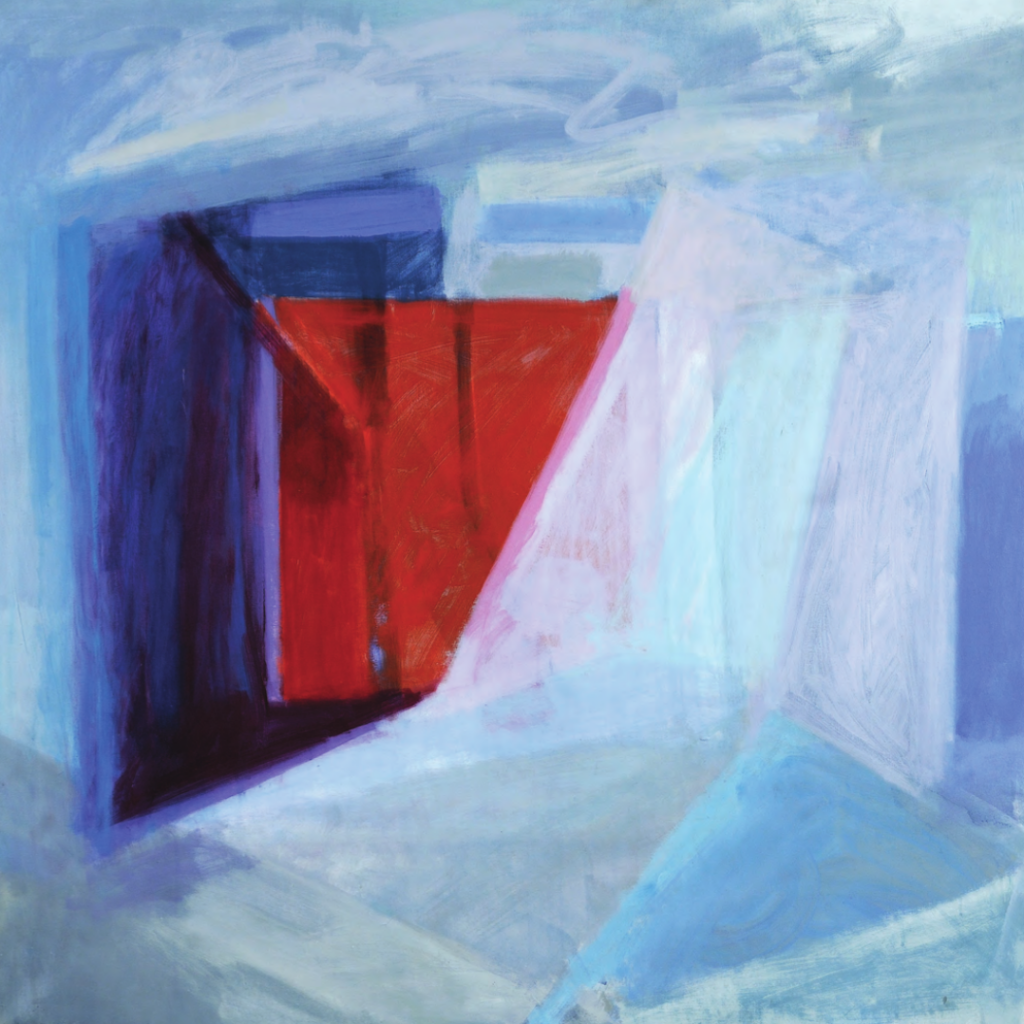
Helene Herzbrun, Entrances (detail), 1977. Acrylic on canvas, framed: 52 5/8 × 52 3/4 × 1 5/8 in., image: 52 × 52 in. American University Museum, X1639.
Grace Hartigan & Helene Herzbrun: Reframing Abstract Expressionism
American University Museum at the Katzen Arts Center, Washington, DC
September 3 – October 20, 2019
The past few years has witnessed an urgent reappraisal of the Abstract Expressionist canon in the United States. Recent game-changers, such as the Women of Abstract Expressionism exhibition and catalogue (2016), and steady growth in the art market, have turned a sharp eye on the women whose careers received little critical and financial support during and after the heyday of heroic gesturalism and figurative abstraction in the 1950s. Norma Broude, the distinguished feminist art historian and professor emerita at The American University, has organized an exhibition that argues for a reframing of the geographic center of New York, and presents a two-person show on Grace Hartigan (1922-2008) and Helene Herzbrun (1922-1984). Both artists, who had a cordial friendship, had lived and exhibited for many decades around the Baltimore and Washington, DC region, and many of the paintings on view are drawn from local private collections and museums. Hartigan, the more celebrated of the two, has received considerable scholarly attention. Her early career in New York was shaped by social relationships with the first generation of Abstract Expressionists, including Jackson Pollock and Willem de Kooning (a seminal influence), and the seductive riffraff of modern life in the fifties around her studio on the Lower East Side. Hartigan often incorporated the popular and material subjects—the “vulgar and vital”—from her surroundings, and Baltimore eventually proved to have much to offer. Her early artistic development was also largely influenced by her own study of paintings at the Metropolitan Museum of Art and transformative friendships with poets Frank O’Hara and Barbara Guest. By 1953, she had the attention of Alfred Barr, Jr. and curator Dorothy C. Miller, who accessioned her Baroque-inspired masterpiece, Persian Jacket (1952), into the permanent collection of the Museum of Modern Art; this was followed by her participation as the only woman artist in MoMA’s groundbreaking exhibitions, 12 Americans (1956) and The New American Painting (1958-1959). Broude’s catalogue essays purposefully consider the negative impact on Hartigan’s career after leaving New York City for Baltimore, and the artist’s serious disappointment in the regional artistic scene. This shifted to some degree when she found support in her new intellectual community as a revered professor and mentor at the Maryland Institute of Art (MICA), Hoffberger School. Comparably, Broude develops a fascinating biographical sketch of Helene Herzbrun, whose archives are held at American University. Herzbrun experienced similar challenges in her desire to establish critical recognition outside the parameters of New York and beyond the stylistic popularity of Color Field painting practiced by her male contemporaries in Washington. Herzbrun maintained an important correspondence with Ab-Ex artist Jack Tworkov, with whom she worked as a MFA student at AU. She was a faculty member in the University’s art department until her death in 1984. Addressing the limited opportunities for artists in the area, Herzbrun co-founded an important cooperative space called Jefferson Place Gallery in DC. Hartigan and Herzbrun make exciting visual partners in Reframing Abstract Expressionism. Their painterly dialogues on nature and the landscape interrogate the creative process and explore the persistent motivations to paint abstractly while negotiating representation, structure, and spontaneity, all essential components of the living language of Abstract Expressionism. This exhibition expands our understanding of the networks of production and distribution of ideas and resources on Abstract Expressionism to the regional centers of the country.



